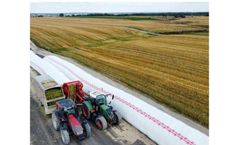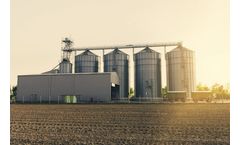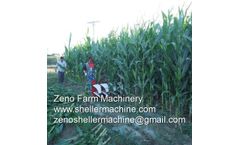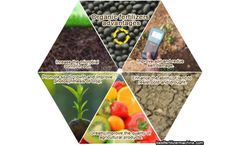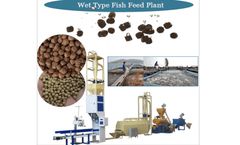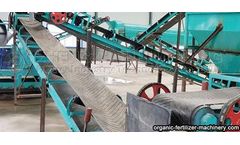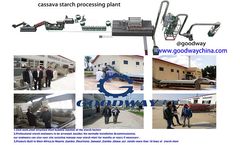Grain Production Articles & Analysis
60 articles found
“Bagged silage can have a huge impact on profitability, herd health, and milk production,” says Bonni Kowalke, fermentation researcher, practitioner and owner of Stem Ag Consulting, LLC., a firm that specializes in monitoring and optimizing dairy farm inputs and outputs at all forage production stages. ...
From Leasing to Wind Farms to Owning His Own. Cosmos, Minnesota (USA), sits along the South Fork of the Crow River. Grain is the lifeblood of the small city, having been founded in 1867 by a pair of wheat farmers. ...
ByEocycle
BiOWiSH Technologies, Inc. engaged Precision Study Management as a third party Contract Research Organization (CRO) to conduct a study to determine the effects of BiOWiSH Crop Liquid coated urea on grain sorghum production in Markham, Texas, ...
Maintaining the quality of stored grain is crucial, both to ensure the quality of the final food products, and to prevent economic losses for farmers. ...
It also used as raw material in industries to make food products. Commercial agriculture marketing also varies from region to region. ...
With the development of agriculture and the improvement of fertilizer production line technology, agricultural crop production began to reduce the use of pesticides and fertilizers. ...
Thousand kernel weight (TKW) is a yield component, and protein rate is a price component. Both are important parameters to farmers and depend on photosynthetical activity as well as nitrogen availability. Up to 50% of photosynthetical activity of wheat is due to the flag ...
The most and least productive areas in each field are then matched with the corresponding seed rates and applications. ...
ByGrowers
Feeding is the most important task in the intensive pond production of catfish, in a normal situation, for catfish can be seen only when they are coming up to feed, and their feeding behavior can be an important clue to general health and to other conditions in the pond. ...
Fertilizer is one of the decisive factors for the high yield and quality of grain. The use of fertilizer has made a great contribution to the increase of crop production and the alleviation of food shortage. ...
Starch is one of the most abundant substances in nature, a renewable and almost unlimited resource. Starch is produced from grain or root crops. It is mainly used as food, but is also readily converted chemically, physically, and biologically into many useful products to date, starch is used to produce such diverse products as food, paper, ...
So that will bring you less total downtime and longer life. Ceramic grains products could process into kinds of shapes, like belts, sand discs, sheets. The grains character decide that products have longer sanding life, higher cutting force and higher sanding efficiency performance. ...
dry fish feed extruder machine philippines Extrusion processing technology has become of major importance in the production of modern feeds used in intensive aquaculture. In recent years there has been a constant growth in the application of extruded diets for aquatic feeding. ...
Farmers are now able to test the quality of their grain, and then store it on-farm to preserve its identity. Increasingly efficient trucks with advanced routing capabilities can bring identity-preserved, high quality grain from farmer to buyer. ...
Maintaining the quality of stored grain is crucial, both to ensure the quality of the final food products, and to prevent economic losses for farmers. ...
Scientists and physicians are looking for clues to a worrying increase in fungal infections and exploring ways to reduce the threat. Fungi are everywhere — from the mushrooms that decompose fallen logs in the forest, to the mold that grows in your bathtub, to the microscopic fungal cells that reside naturally on your skin. Scientists estimate there are 1.5 million species of fungi on the ...
ByEnsia
North China Plain is one of the most important grain-producing areas in China. Because of unevenly distributed precipitation in this semi-arid area, crop production largely relies on underground blue water (UBW) to irrigate, overexploitation of which causes a lot of environmental problems. In this paper, we first defined the representative division of winter ...
In the late 1900s, as per-acre grain yields moved to 3 metric tons per hectare in South and Southeast Asia and Latin America, 5 metric tons per hectare in China, and 10 metric tons per hectare in North America, Europe and Japan, there’s one place where production stagnated big time: sub-Saharan Africa, where loss of soil fertility on small farms trapped ...
ByEnsia
We were using the old traditional methods of producing the food grains. Then the Prime Minister Pt. Jawaharlal Nehru was quick to know and introduce many five years plane to make India a self reliable in the production of food grains. ...
Meanwhile, water supplies are being diverted to nonfarm uses and cropland is being lost to urban and industrial construction. With China’s grain yield already among the highest in the world, the potential for China to increase production within its own borders is limited. ...

